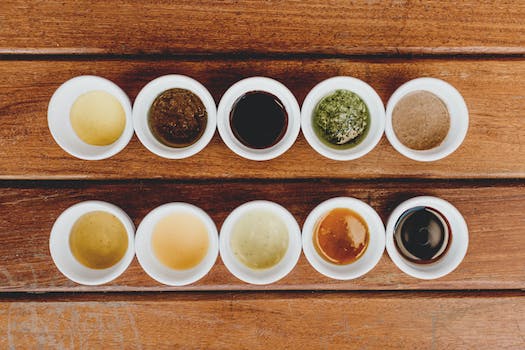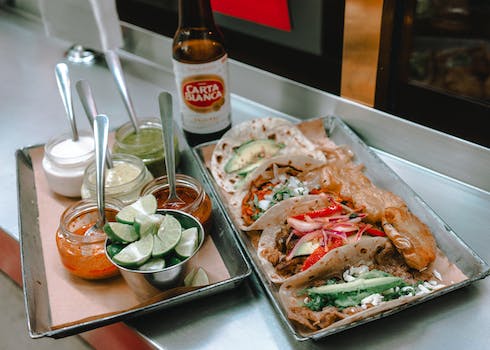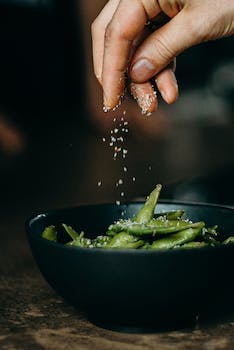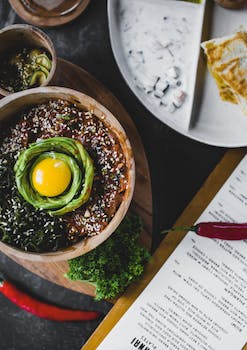

-
Table of Contents
Discover the world of ramen with our ultimate guide: Shio, Tonkotsu, Miso, and Shoyu - a journey through irresistible flavors.
Introduction
A Guide to Different Types of Ramen: Shio, Tonkotsu, Miso, and Shoyu
Ramen, a popular Japanese dish, has gained worldwide recognition for its delicious flavors and variety. With its humble origins as a Chinese noodle soup, ramen has evolved into a culinary art form with numerous regional variations. In this guide, we will explore four of the most popular types of ramen: Shio, Tonkotsu, Miso, and Shoyu. Each type offers a unique taste experience, showcasing the diverse range of flavors and ingredients that make ramen a beloved comfort food. Whether you're a ramen enthusiast or a curious foodie, this guide will help you navigate the world of ramen and discover your favorite type.
Exploring the Rich Flavors of Shio Ramen
Ramen, a beloved Japanese dish, has gained immense popularity worldwide. With its rich flavors and comforting warmth, it has become a staple in many people's diets. However, not all ramen is created equal. There are various types of ramen, each with its own unique flavor profile and ingredients. In this guide, we will explore the different types of ramen, starting with shio ramen.
Shio ramen, also known as salt ramen, is one of the oldest and simplest forms of ramen. As the name suggests, the broth of shio ramen is seasoned with salt, giving it a delicate and light flavor. The broth is typically made by simmering chicken or pork bones with vegetables and then adding salt to taste. This results in a clear and savory broth that is both refreshing and satisfying.
The noodles used in shio ramen are usually thin and straight, allowing them to absorb the flavors of the broth. They are cooked until they reach the perfect al dente texture, giving them a satisfying chewiness. The toppings for shio ramen are often minimalistic, with sliced green onions, seaweed, and a few pieces of tender chashu (braised pork) being the most common additions. These toppings complement the simplicity of the broth and allow its flavors to shine through.
One of the key characteristics of shio ramen is its lightness. Unlike some other types of ramen, shio ramen is not heavy or overly rich. It is a perfect choice for those who prefer a more subtle and delicate flavor. The saltiness of the broth is well-balanced, enhancing the umami flavors without overpowering them. This makes shio ramen a great option for those who are new to ramen or prefer a milder taste.
Shio ramen is also known for its versatility. While the traditional version uses a clear broth, variations of shio ramen can be found across Japan and even in other parts of the world. Some regional variations include adding seafood, such as clams or scallops, to the broth, giving it a briny and oceanic flavor. Others may incorporate additional seasonings like soy sauce or miso to enhance the complexity of the broth. These variations allow for a wide range of flavors and ensure that there is a shio ramen to suit every palate.
In conclusion, shio ramen is a delightful and versatile type of ramen that offers a light and delicate flavor. Its clear broth, tender noodles, and minimalistic toppings create a harmonious balance of flavors. Whether you are a ramen aficionado or new to this beloved dish, shio ramen is definitely worth a try. Its simplicity and versatility make it a perfect choice for those who appreciate the subtleties of Japanese cuisine. So, the next time you find yourself craving a comforting bowl of ramen, consider exploring the rich flavors of shio ramen.
Unveiling the Creamy Goodness of Tonkotsu Ramen

Ramen, a beloved Japanese dish, has gained immense popularity worldwide. With its rich broth, chewy noodles, and various toppings, ramen has become a go-to comfort food for many. One of the most popular types of ramen is tonkotsu ramen, known for its creamy and flavorful broth. In this article, we will delve into the world of tonkotsu ramen, exploring its origins, ingredients, and how it differs from other types of ramen.
Tonkotsu ramen originated in Fukuoka, a city in southern Japan. It is believed to have been created in the 1940s by a street vendor who wanted to make a hearty and filling meal for the working class. The name "tonkotsu" translates to "pork bone" in Japanese, which is a key ingredient in this type of ramen.
The broth is the heart and soul of tonkotsu ramen. It is made by simmering pork bones for several hours, resulting in a rich and creamy consistency. The long cooking process extracts the collagen from the bones, giving the broth its thick and velvety texture. This collagen also adds a unique umami flavor to the broth, making it incredibly satisfying.
To enhance the flavor of the broth, other ingredients such as onions, garlic, ginger, and mushrooms are often added during the cooking process. These aromatics infuse the broth with their distinct flavors, creating a complex and well-rounded taste. Additionally, some variations of tonkotsu ramen may include soy sauce or miso paste to further enhance the flavor profile.
The noodles used in tonkotsu ramen are typically thin and straight, allowing them to absorb the rich broth. They are cooked until they reach the perfect balance of chewiness and tenderness. The toppings for tonkotsu ramen vary, but common choices include sliced pork belly (chashu), soft-boiled eggs, green onions, and seaweed. These toppings add texture and additional flavors to the dish.
Compared to other types of ramen, tonkotsu ramen stands out for its creamy and indulgent broth. Shio ramen, for example, has a clear and salty broth, while miso ramen features a rich and savory broth with a hint of sweetness. Shoyu ramen, on the other hand, has a soy sauce-based broth that is lighter in flavor compared to tonkotsu ramen. Each type of ramen has its own unique characteristics, but tonkotsu ramen is often favored for its richness and depth of flavor.
In recent years, tonkotsu ramen has gained popularity outside of Japan, with ramen shops dedicated solely to this type of ramen popping up in various cities around the world. Its creamy goodness and comforting taste have captivated the hearts and taste buds of ramen enthusiasts everywhere.
In conclusion, tonkotsu ramen is a delicious and satisfying type of ramen known for its creamy and flavorful broth. Its origins in Fukuoka, Japan, and the long cooking process involved in making the broth contribute to its unique taste and texture. With its popularity continuing to grow, tonkotsu ramen has become a staple in the world of ramen, offering a truly indulgent and comforting dining experience.
Discovering the Savory Delights of Miso and Shoyu Ramen
Discovering the Savory Delights of Miso and Shoyu Ramen
When it comes to ramen, there are countless variations to choose from. Each type has its own unique flavor profile and ingredients, making the experience of trying different types of ramen a truly delightful adventure. In this article, we will explore the savory delights of miso and shoyu ramen, two popular types that are sure to satisfy your taste buds.
Miso ramen, originating from Hokkaido, Japan, is known for its rich and hearty flavor. The key ingredient in miso ramen is, of course, miso paste. Made from fermented soybeans, miso paste adds a deep umami taste to the broth. The broth is typically made by simmering pork bones, chicken, and vegetables for hours, resulting in a flavorful and complex base. The noodles used in miso ramen are usually thick and curly, allowing them to soak up the delicious broth. Toppings for miso ramen often include sliced pork, bean sprouts, corn, and green onions. The combination of the savory broth, chewy noodles, and various toppings creates a truly satisfying bowl of miso ramen.
On the other hand, shoyu ramen, which originated in Tokyo, has a lighter and more delicate flavor compared to miso ramen. Shoyu, meaning soy sauce, is the main seasoning used in this type of ramen. The broth is typically made by simmering chicken, pork, and various vegetables, and then adding soy sauce to enhance the flavor. The noodles used in shoyu ramen are usually thin and straight, allowing them to absorb the broth without overpowering it. Common toppings for shoyu ramen include sliced pork, bamboo shoots, seaweed, and green onions. The combination of the fragrant broth, tender noodles, and flavorful toppings makes shoyu ramen a true delight for the senses.
While miso and shoyu ramen have their own distinct flavors, they both share a common characteristic - they are incredibly comforting and satisfying. Whether you prefer the rich and robust flavors of miso ramen or the lighter and more delicate taste of shoyu ramen, both types are sure to warm your soul and leave you craving for more.
When it comes to enjoying miso and shoyu ramen, there are a few tips to keep in mind. Firstly, it's important to pay attention to the quality of the ingredients. Using fresh and high-quality ingredients will greatly enhance the flavor of the broth and toppings. Secondly, don't be afraid to customize your ramen to suit your preferences. You can add extra toppings such as soft-boiled eggs, mushrooms, or even spicy chili oil to give your bowl of ramen an extra kick. Lastly, don't forget to slurp your noodles! In Japanese culture, slurping noodles is not only acceptable but also a sign of appreciation for the chef.
In conclusion, miso and shoyu ramen are two types of ramen that offer unique and delightful flavors. Whether you prefer the rich and hearty taste of miso ramen or the lighter and more delicate flavor of shoyu ramen, both types are sure to satisfy your cravings. So, the next time you're in the mood for a comforting and delicious bowl of ramen, give miso or shoyu ramen a try and embark on a culinary journey that will leave you wanting more.
Q&A
1. What are the main ingredients in Shio ramen?
The main ingredients in Shio ramen are salt, chicken or vegetable broth, and thin noodles.
2. What is the key characteristic of Tonkotsu ramen?
Tonkotsu ramen is known for its rich and creamy pork bone broth, which is simmered for several hours to achieve its distinct flavor.
3. What is the main flavor profile of Miso ramen?
Miso ramen has a savory and slightly sweet flavor profile, thanks to the addition of fermented soybean paste (miso) in the broth.
Conclusion
In conclusion, ramen is a popular and diverse dish with various types to suit different tastes. Shio ramen offers a light and salty broth, while tonkotsu ramen features a rich and creamy pork bone broth. Miso ramen provides a savory and hearty flavor with fermented soybean paste, and shoyu ramen offers a soy sauce-based broth with a balanced taste. Each type of ramen has its own unique characteristics, making it a versatile and delicious choice for noodle lovers.












